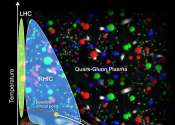The first evidence of top quark production in nucleus-nucleus collisions
The Compact Muon Solenoid (CMS) Collaboration, a large group of researchers from different institutes worldwide, has recently gathered the very first evidence of top quark production in nucleus-nucleus collisions. Their work, ...









